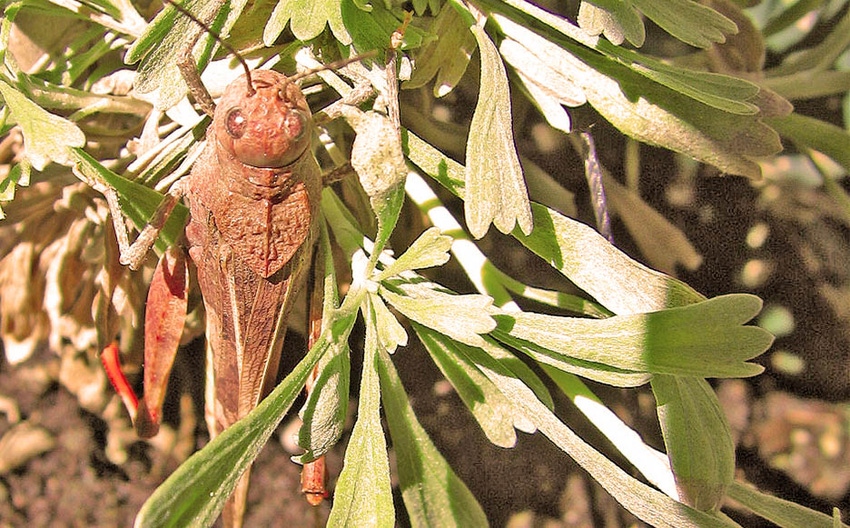March 7, 2013

No stranger to agriculture, the eighth plague of Exodus is back, but at least not over American crop fields. Sometimes described as “hell from above,” Egypt and the Middle East have been hit with a massive swarm of locusts some 30 million insects strong. Crop dusters were being used to fight the locusts with chemical sprays, just as they were used back in 2004, during a similar swarm.
For U.S. agriculture, the memories of locust clouds have long faded, but the speed, ferocity and devastation of locusts, particularly the Rocky Mountain locust, would have once been a fact of life for a sweep of American farmers from California to Texas to Minnesota.
The density of Rocky Mountain locust swarms that periodically hit U.S. crop fields during the 1800s is difficult to grasp today. Western settler accounts testify to locust clouds “blocking out the sun.” Laura Ingalls Wilder wrote: “The Cloud was hailing grasshoppers. The cloud was grasshoppers. Their bodies hid the sun and made darkness. Their thin, large wings gleamed and glittered. The rasping whirring of their wings filled the whole air and they hit the ground and the house with the noise of a hailstorm.”
Within the short span of hours, locust swarms could blow in and devour everything a farmer had — total consumption: crops, fabric, or clothing. Farmers tried in vain to fight the swarms with fires and metal scoops covered with tar or molasses, and were met with destruction on a catastrophic scale as Wild West Magazine details: “The locusts soon scoured the fields of crops, the trees of leaves, every blade of grass, the wool off sheep, the harnesses off horses, the paint off wagons and the handles off pitchforks … The locusts, farmers grimly quipped, ‘ate everything but the mortgage.’”
In 1875, the largest locust swarm in history was recorded over the Midwest — 198,000 square miles. (For a size reference, California covers 163,696 square miles.) The 1875 swarm was estimated to contain several trillion locusts and probably weighed several million tons. That was the largest locust cloud in world history, according to Jeffrey Lockwood, author of “The Devastating Rise and Mysterious Disappearance of the Insect that Shaped the American Frontier.”
Only 27 years after the record swarm the Rocky Mountain locust was extinct, with the last recorded sighting in 1902. Scientists debate the reason of the extinction with general consensus pointing toward cultivation of farmland: Western farmers put more and more acreage under the plow — the same acreage that was host to locust eggs. Researchers still trek to glaciers in states like Wyoming to get frozen Rocky Mountain locust carcasses for study and museum displays.
For 19th century American farmers, a sudden locust cloud must have literally looked and sounded like a biblical plague. Lockwood offers this helpless description from Highland, Kan., settler E. Snyder: “[The locusts] came rattling and pattering on the houses, and against the windows, falling the fields, on the prairie — everywhere and on everything. By about 4 o’clock in the afternoon, every tree and bush, buildings, fences, fields, roads, and everything, except animated beings, was completely covered with grasshoppers.”
Snyder’s description isn’t precisely the same as Exodus 10:15 — but it’s strikingly similar: “For they covered the face of the whole earth, so that the land was darkened; and they ate every herb of the land and all the fruit of the trees which the hail had left. So there remained nothing green on the trees or on the plants of the field throughout all the land of Egypt.”
There were no tears when the Rocky Mountain locust went extinct in 1902. Science’s loss and agriculture’s gain.
Twitter: @CBennett71
You May Also Like




